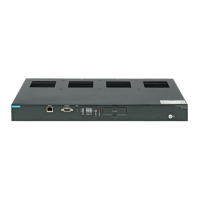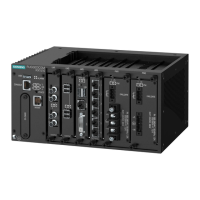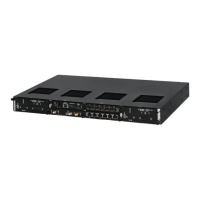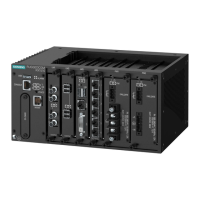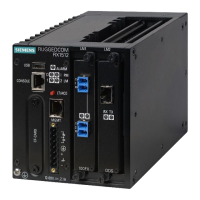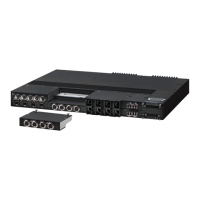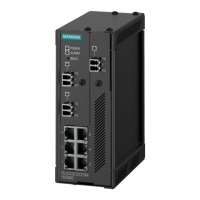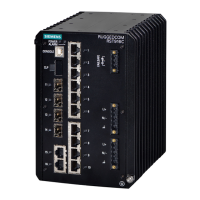RUGGEDCOM ROX II
User Guide
Chapter 5
Setup and Configuration
Layer 3 Switching Concepts 669
Section 5.31.1
Layer 3 Switching Concepts
The following sections describe Layer 3 Switching concepts and rules:
• Section 5.31.1.1, “Layer 3 Switch Forwarding Table”
• Section 5.31.1.2, “Static Layer 3 Switching Rules”
• Section 5.31.1.3, “Dynamic Learning of Layer 3 Switching Rules”
• Section 5.31.1.4, “Layer 3 Switch ARP Table”
• Section 5.31.1.5, “Multicast Cross-VLAN Layer 2 Switching”
• Section 5.31.1.6, “Size of the Layer 3 Switch Forwarding Table”
• Section 5.31.1.7, “Interaction with the Firewall”
Section 5.31.1.1
Layer 3 Switch Forwarding Table
To route a packet with a specific destination IP address, a router needs the following information:
• Egress interface (subnet): this information is stored in the router's Routing Table.
NOTE
In a Layer 2 switched network segment, a VLAN constitutes an IP subnet.
• Next-hop gateway Media Access Control (MAC) address: this information is stored in the router's ARP
Table.
NOTE
If the next hop is the destination subnet itself, then the destination host MAC address is required.
A Layer 3 Switch uses the routing information listed above and translates it into Layer 3 switching rules. These
rules are known as the Layer 3 Switch Forwarding Information Base (FIB) or the Layer 3 Switch Forwarding
Table. A Layer 3 switching rule is actually a set of parameters identifying a traffic flow to be switched and
determining how to perform the switching.
Layer 3 switching Application-Specific Integrated Circuits (ASICs) store Layer 3 switching rules in a Ternary
Content Addressable Memory (TCAM) table. Layer 3 switching rules can be statically configured or dynamically
learned (also known as auto-learned).
Section 5.31.1.2
Static Layer 3 Switching Rules
When creating a static route through switch management, hardware acceleration can be explicitly configured.
If hardware acceleration is selected, an appropriate Layer 3 switching rule is installed in the ASIC's TCAM and
never ages out.
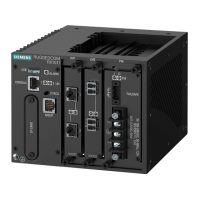
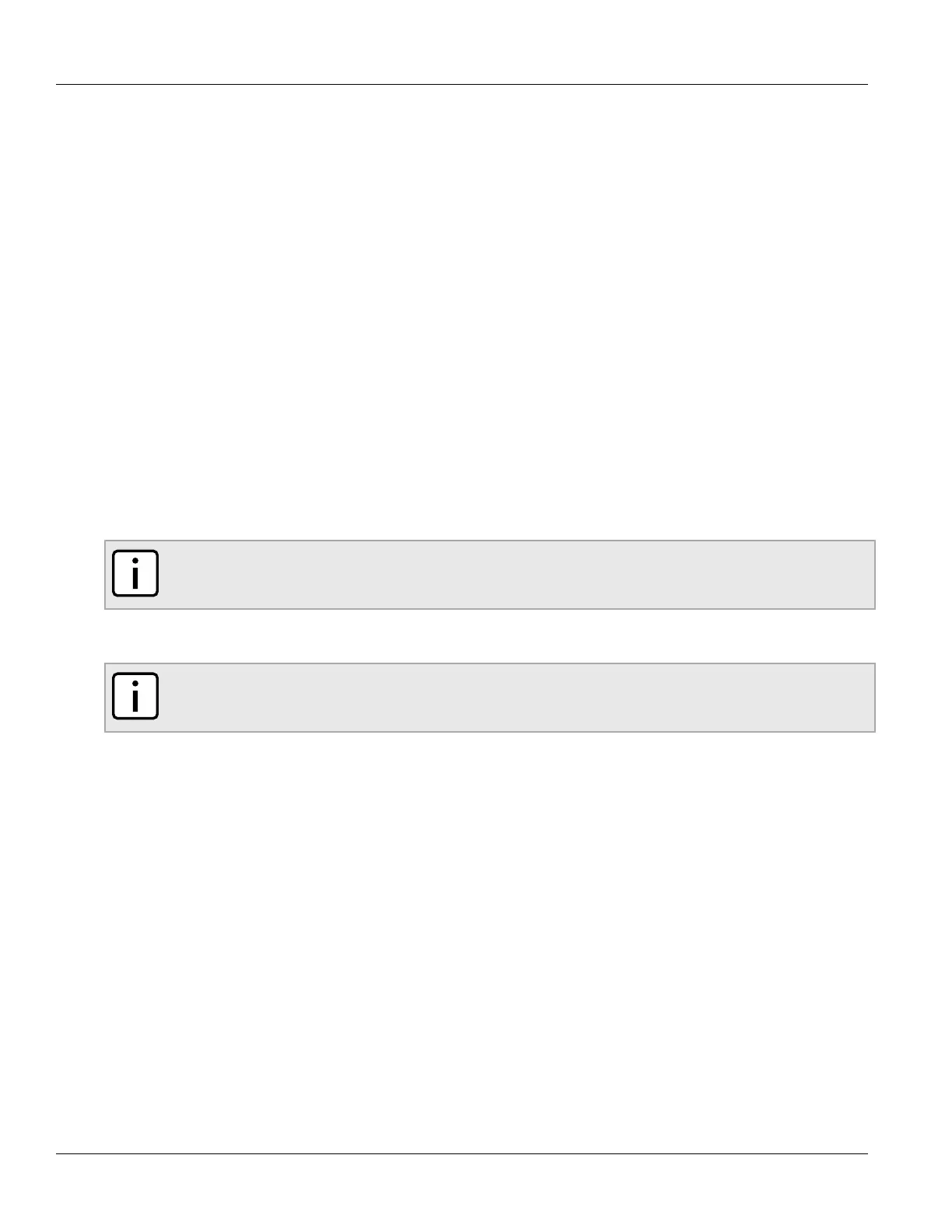